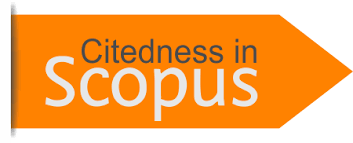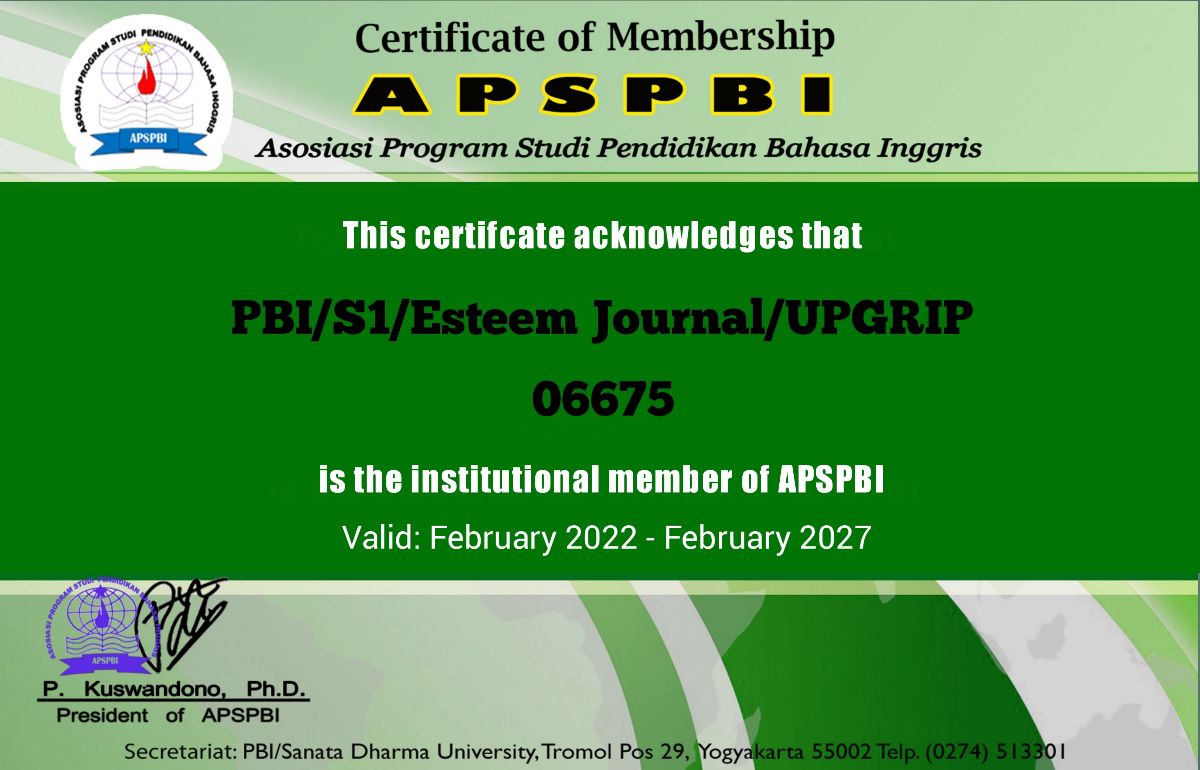THE ROLE OF TWITTER IN GEN Z ENGLISH DEVELOPMENT
DOI:
https://doi.org/10.31851/esteem.v7i2.15317Keywords:
Twitter, English Development, Gen ZAbstract
Technology development has led to the rise of social media, which affects all facets of a person's life, including Gen Z. The purpose of this study is to show Gen Z's overall opinions about Twitter's contribution to their English language development. In this poll, 84 Gen Z participants, ranging in age from 15 to 27, from diverse backgrounds and residences across Indonesia, took part. The participants divulged their answers to the survey questions concerning Twitter's contribution to the evolution of Gen Z English. Simple percentage analysis was used to examine the respondents' questionnaire responses, and the results were explained in relation to relevant theories and earlier research. This study revealed that Twitter plays a significant role in fostering the development of Gen Z English. Twitter not only helps Generation Z become more fluent in English, but it also gives them a platform to voice their opinions, share information, promote themselves, and engage in communication. This study offers useful data and fresh perspectives that may help us comprehend the part social media plays in Gen Z's English development.
References
Ahmed, J. (2012). English Language Teaching (ELT) and integration of media of technology. Procedia – Social Behavior and Sciences, 47, 924-929.
Alsharidi, N. K. M. (2018). The use of Twitter amongst female Saudi EFL learners. International Journal of Applied Linguistics & English Literature, 7(4), 198-205.
Amoros, M., O., Moreno, F., R., Londono, G., I., P., & Cuevas, M., T. (2024). Twitter killed the media star: A historical evolution of marketing communication used by Spanish universities. Journal of Historical Research in Marketing, 16(1), 48-70.
Araujo, T., Neijens, P., & Vliegenthart, R. (2016). Getting the word out on Twitter: The role of influentials, information brokers and strong ties in building word-of-mouth for brands. International Journal of Advertising, 36(3), 496-513.
Aydin, S (2014). Twitter as an educational environment. Turkish Online Journal of Distance Education – TOJDE, 15(1), 10-21.
Alzamil, L., & Alghammas, A. (2023) The effectiveness of using Twitter in developing EFL Saudi female students’ grammatical knowledge. Migration Letters, 20(7), 1227-1250.
Bicen, H., & Cavus, N. (2012). Twitter usage habits of undergraduate students. Procedia – Social and Behavioral Sciences, 14, 335 – 339.
Chacon, G., Giasson, T., & Brin, C. (2018). “That’s what I’m talking about”: Twitter as a promotional tool for political journalists. Popular Communication: The International Journal of Media and Culture, 1-17.
Charan, A., & Bansal, E. (2016). Impact of digital marketing through Facebook vs. Twitter: A comparative study on Indian consumers. Review of Professional Management, 14(2), 34-51.
Dechene, M., Lesperance, K., Ziernwald, L., & Holzberger, D. (2024). From research to retweets - Exploring the role of educational Twitter (X) communities in promoting science communication and evidence-based teaching. Education Sciences, 14(2), 1-33.
Ekinci, E. & Kaya, E., S. (2018). Effects of Twitter on EFL students’ academic success in writing. International Journal of Languages’ Education and Teaching, 6(3), 89-102.
Fink, A. (2003). How to Design Survey Studies (2nd Ed.): Sage Publications, Inc.
Hayat, et., al. (2024). Analyzing political trends and discourse on Twitter of influential Indonesian Accounts. Nyimak Journal of Communication, 8(1), 141-156.
Kazemi, A., & Narafshan, M., H. (2014). Technology and English Language Teaching (ELT). Advances in Language and Literary Studies, 5(6), 60-67.
Kim, S., D., & Kim, J., W. (2014). Public opinion sensing and trend analysis on social media: a study on nuclear power on twitter. International Journal of Multimedia and Ubiquitous Engineering, 9(11), 373-384.
Krutka, D. G. & Carpenter, J. P. (2016). Participatory learning through social media:How and why social studies educators use Twitter. Contemporary Issues in Technology and Teacher Education, 16(1), 38-59.
Lomicka, L. (2017). Twitter and micro-blogging and language education. in the book of S. Thorne, S. May (eds.), Language, Education and Technology, Encyclopedia of Language and Education, 401-412.
Maros, M., & Rosli, L., (2017). Politeness strategies in Twitter updates of female English language studies Malaysian undergraduate. 3L: The Southeast Asian Journal of English Language Studies, 23(1), 132-149.
Mompean, J., A. & González, J., F. (2016). Twitter-Based EFL pronunciation instruction. Language Learning & Technology, 20(1), 166–190.
Mork, C., M., (2009). Using Twitter in EFL education, The JALT CALL Journal, 5(3), 41-56.
Negrila, A., M., C. (2015). Using social media for ESL learning - Twitter vs Pinterest. JADLeT Journal of Advanced and Distributed Learning Technology, 3(7), 75-86.
Rodriguez, L., H., Garcia, M., M., & Palomino, M., C., P. (2020). Use of Twitter as an educational resource. Analysis of concepts of active and trainee teachers. Education Sciences, 10(1), 1-16.
Sah, P., K. (2015). ‘Let’s tweet to learn English’: Using Twitter as a language tool in the ESL/EFL classroom. Langlit - An International Peer-Reviewed Open Access Journal, 2(1), 10-17.
Serbanescu, A. (2022). Millennials and the Gen Z in the Era of social media in the book of social media, Technology, and New Generations: The Rowman & Littlefield Publishing Group, Inc.
Sirait, S., & Hanim, S. (2022). Improving students’ vocabulary achievement by using Twitter and Instagram multimedia. Journal of Classroom Action Research, 1(2), 1-15
Situmorang, I., Sitompul, H., S. & Saragih, M., C., I. (2022). The effectiveness of Twitter as a literacy medium in improving college students' reading and writing skills. Journal Mantik, 6(3) 3701-3702.
Wulandari, R. S. & Muliani, T. (2023). Users’ perspectives on improving English skills through Twitter and Telegram. Salience Journal, 3(2), 100-109.
Downloads
Published
Issue
Section
License
Copyright (c) 2024 Ira Irzawati, Agnes Felisya Unamo, Kayla Natasha

This work is licensed under a Creative Commons Attribution-NonCommercial-ShareAlike 4.0 International License.
Copyright Notice
Authors who publish with this journal agree to the following terms:
In order to assure the highest standards for published articles, a peer review policy is applied. In pursue of the compliance with academic standards, all parties involved in the publishing process (the authors, the editors and the editorial board and the reviewers) agree to meet the responsibilities stated below in accordance to the Journal publication ethics and malpractice statement.
Duties of Authors:
- The author(s) warrant that the submitted article is an original work, which has not been previously published, and that they have obtained an agreement from any co-author(s) prior to the manuscript’s submission;
- The author(s) should not submit articles describing essentially the same research to more than one journal;
- The authors(s) make certain that the manuscript meets the terms of the Manuscript Submission Guideline regarding appropriate academic citation and that no copyright infringement occurs;
- The authors(s) should inform the editors about any conflict of interests and report any errors they subsequently, discover in their manuscript.
Duties of Editors and the Editorial Board:
- The editors, together with the editorial board, are responsible for deciding upon the publication or rejection of the submitted manuscripts based only on their originality, significance, and relevance to the domains of the journal;
- The editors evaluate the manuscripts compliance with academic criteria, the domains of the journal and the guidelines;
- The editors must at all times respect the confidentiality of any information pertaining to the submitted manuscripts;
- The editors assign the review of each manuscript to two reviewers chosen according to their domains of expertise. The editors must take into account any conflict of interest reported by the authors and the reviewers.
- The editors must ensure that the comments and recommendations of the reviewers are sent to the author(s) in due time and that the manuscripts are returned to the editors, who take the final decision to publish them or not.
Authors are permitted and encouraged to post online a pre-publication manuscript (but not the Publisher final formatted PDF version of the Work) in institutional repositories or on their Websites prior to and during the submission process, as it can lead to productive exchanges, as well as earlier and greater citation of published work (see The Effect of Open Access). Any such posting made before acceptance and publication of the Work shall be updated upon publication to include a reference to the Publisher-assigned DOI (Digital Object Identifier) and a link to the online abstract for the final published Work in the Journal.





























